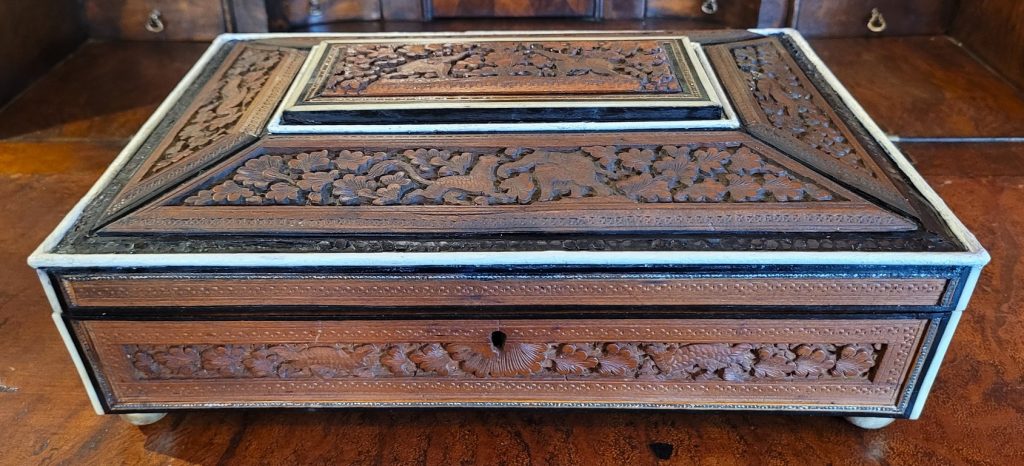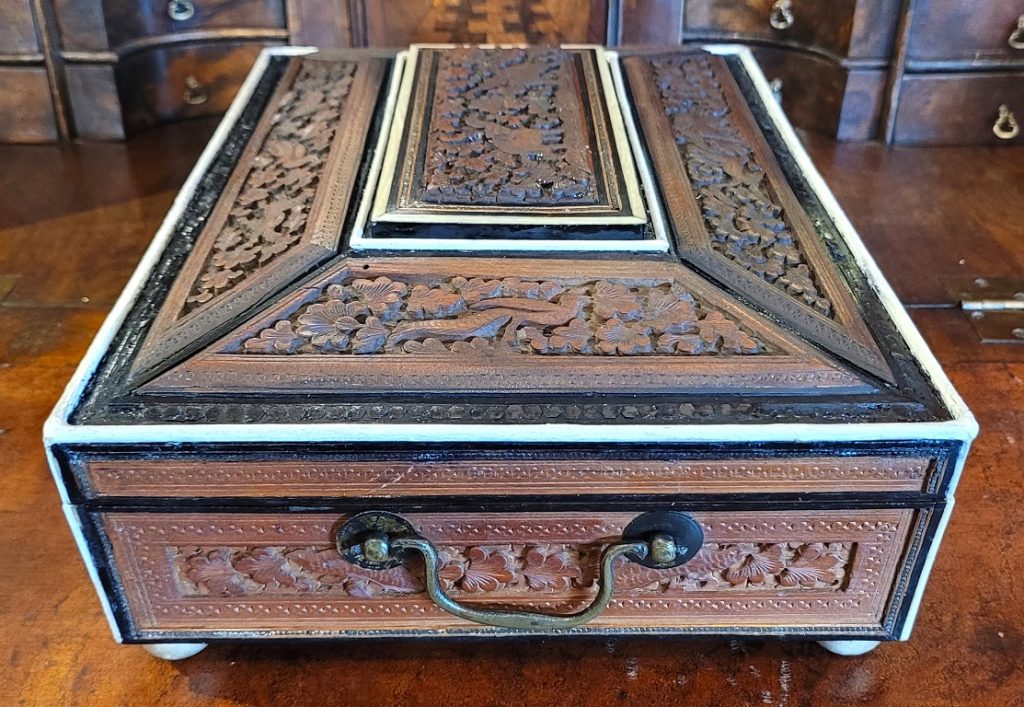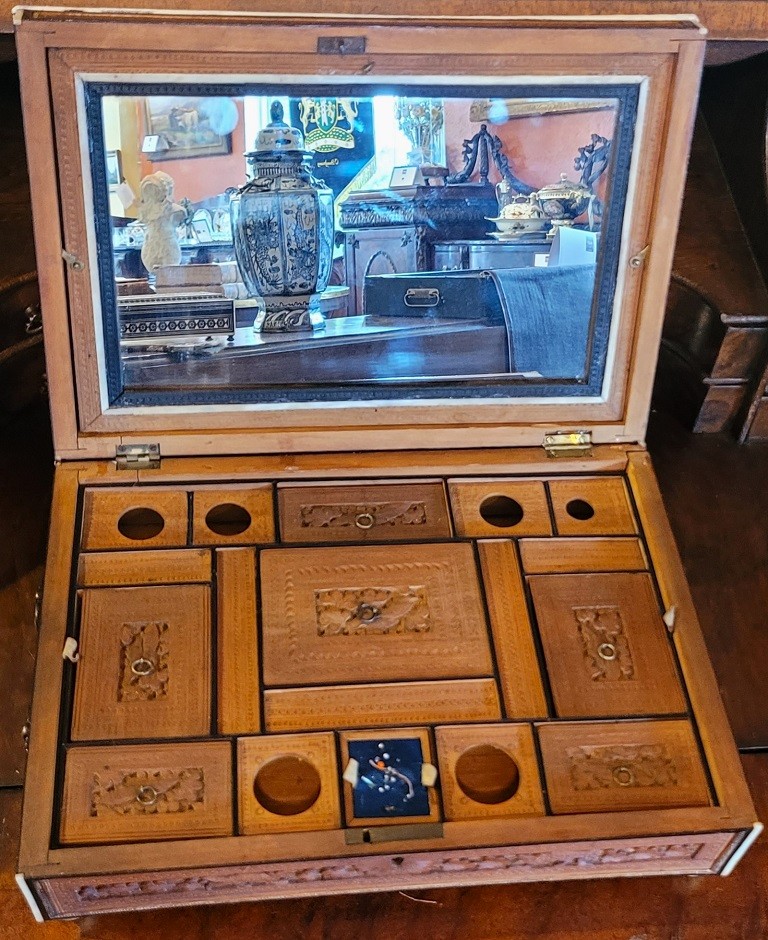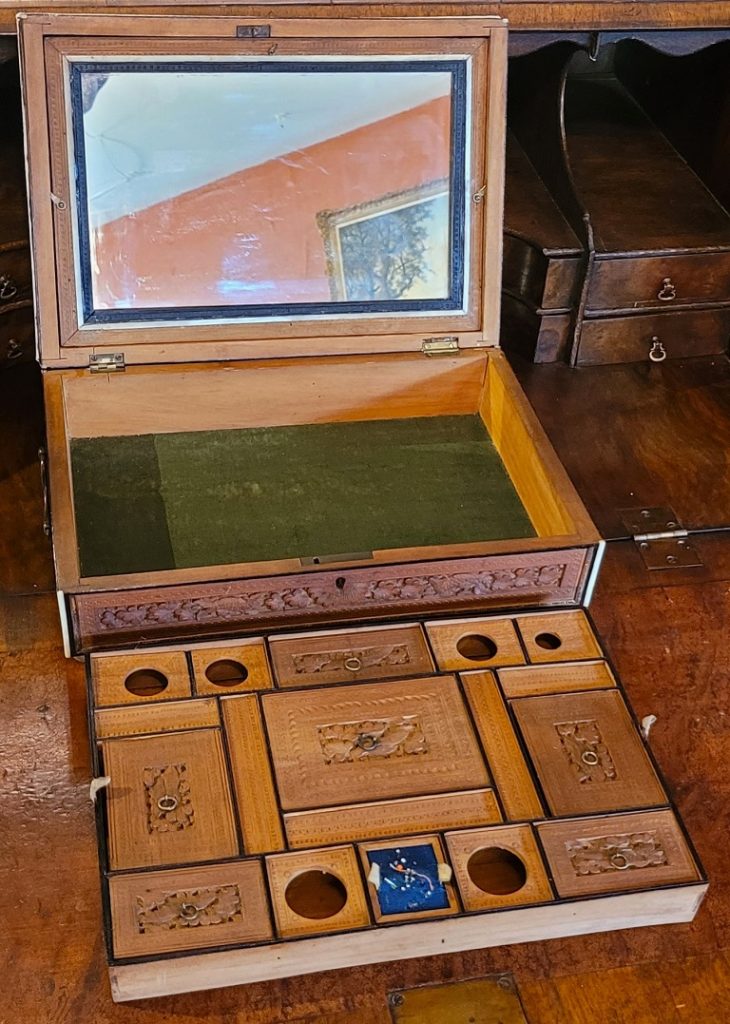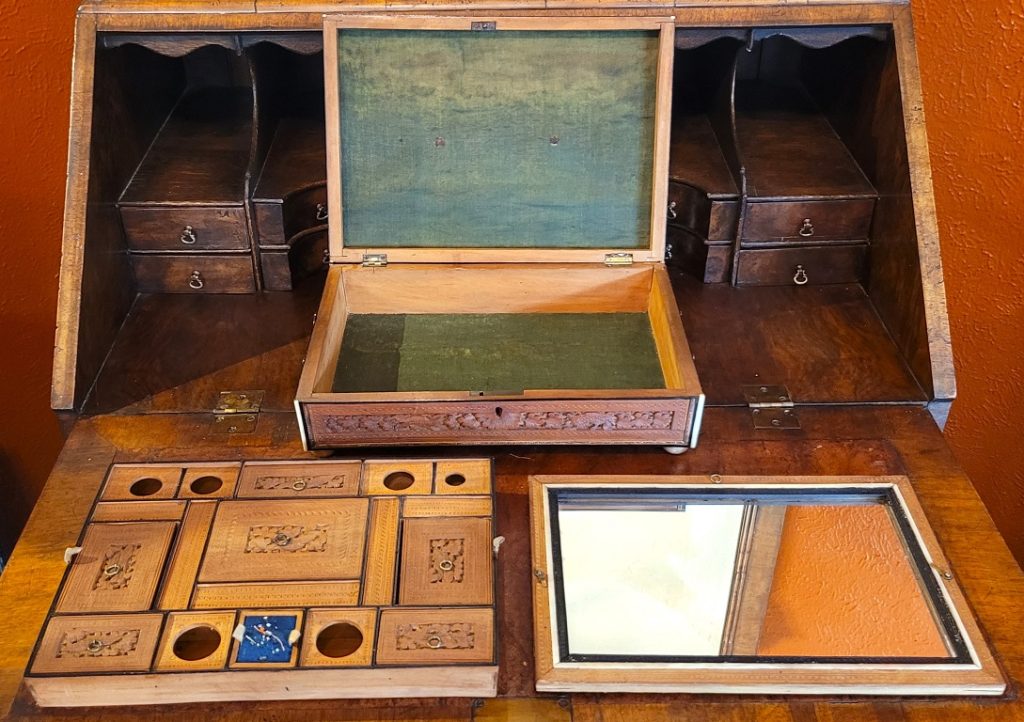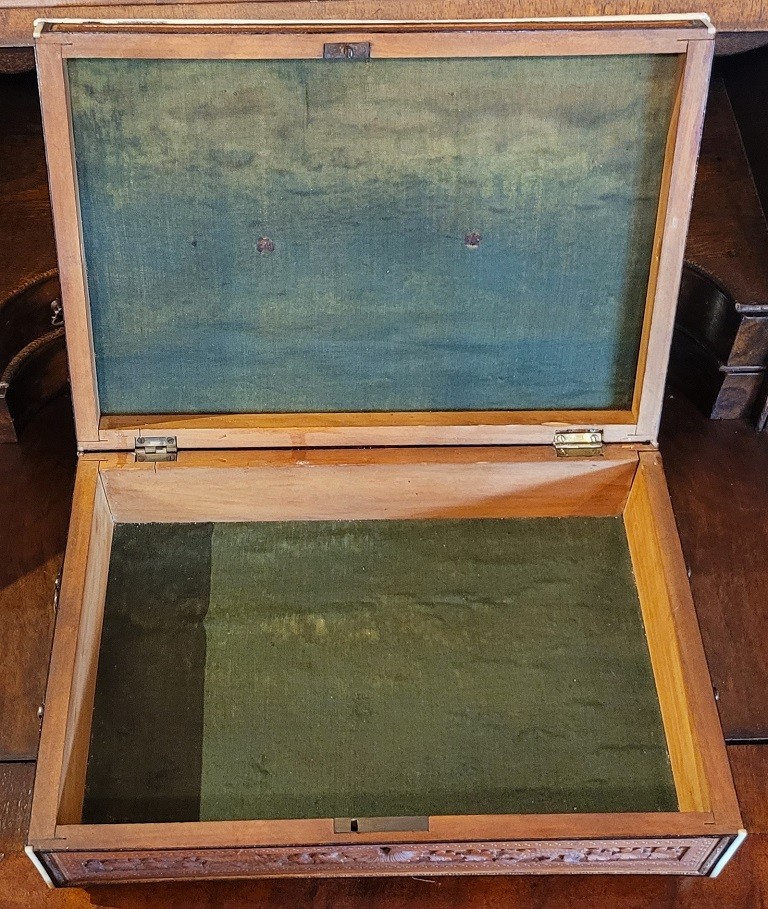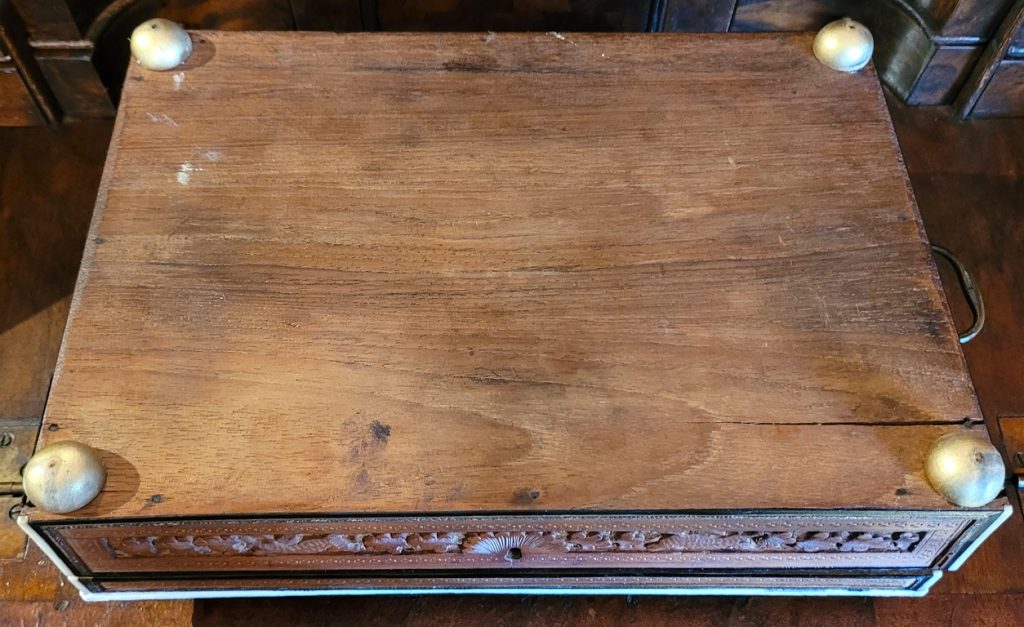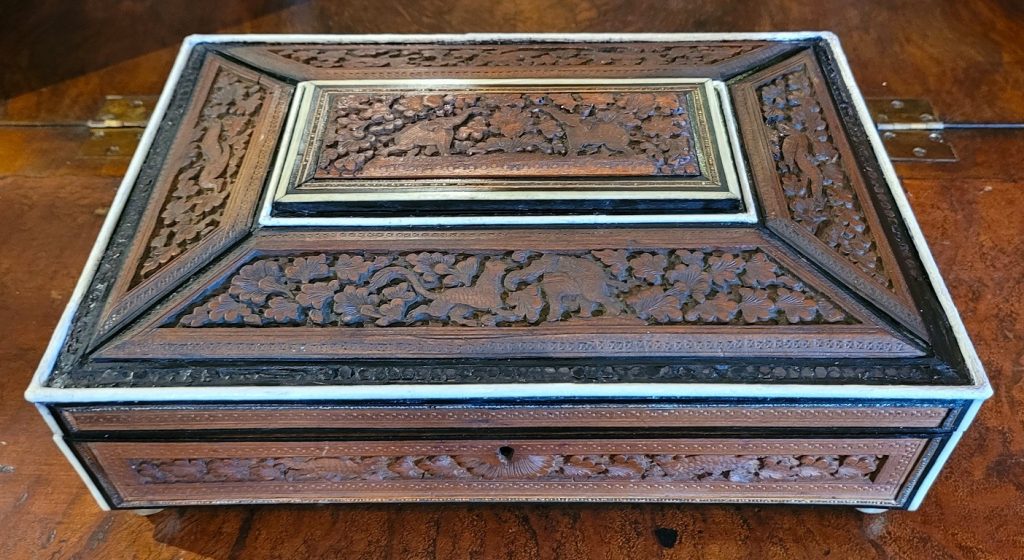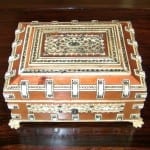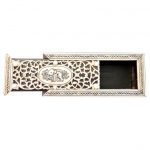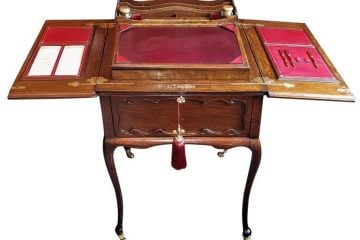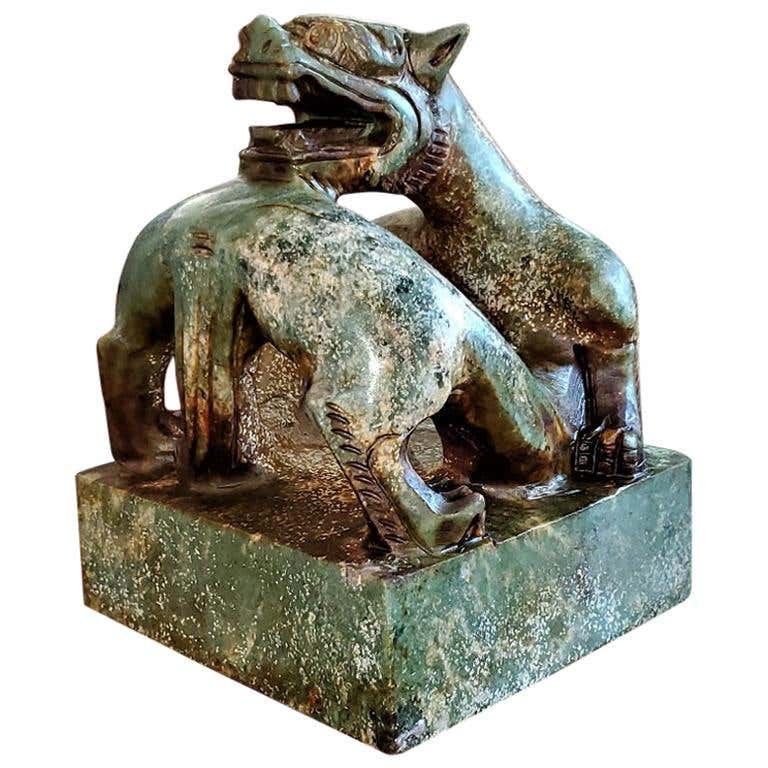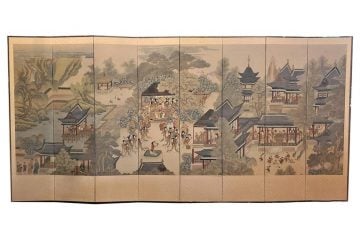19C Anglo Indian Highly Carved Teak and Sandalwood Sarcophagus Sewing Box
PRESENTING A VERY NICE 19C Anglo Indian Highly Carved Teak and Sandalwood Sarcophagus Sewing Box.
Made in Bombay, India circa 1890-1900.
The box case/body is made of sandalwood with highly carved teak wood reliefs and panels on all sides. The panels on the top/lid are of elephants, tigers and birds of paradise with foliage. The carving on the sides is foliage only.
Edged with bone, ivorine and ebony.
The box is in a sarcophagus form with domed lid.
The original brass carry handles are on the sides.
This type of sewing box, from the Bombay area would normally have intricate ‘sadeli mosaic’ work all over, but this one did/does not. That is why we believe it to be later than other examples in our Inventory.
There is evidence of inlay work on the box exterior, but it was not classic ‘sadeli’ work and appears to have consisted of hexagonal pewter medallions on the top/lid and pewter grains on the base inlay borders.
The box has been quite heavily restored, as it was in poor condition on the exterior. There were significant losses to the hexagonal pewter inlays and the areas of loss were filled and the entire border was ebonized. You can still see the hexagonal medallions under the ebonization. The bone edge moldings were replaced with ivorine.
The interior is in great condition and consists of a removeable mirror under the lid portion, with the original green baize lining behind it. The mirror has an ebonized border around the mirror glass which is bordered by bone molding.
The base is removeable and contains a number of lidded sandalwood compartments, edged with ebony.
The interior lids on the base, are each carved and chased.
It still has it’s original pin cushion insert, with blue velvet.
The box sits on 4 gold button feet (a later/recent addition).
Under the removeable tray, the original green baize is still there.
These boxes were made by superb Indian craftsmen, specifically for sale to the ruling British elite. These types of boxes, carved teak or padouk and sandalwood, (whilst beautiful and superbly crafted) were of a lesser quality, than the more profusely and intricately mosaic inlay, tortoiseshell and ivory boxes, made for the British ‘Upper Classes’ in the areas of Bombay and Vizagapatam. These type of boxes were much more affordable back in 1880 (and indeed today) and would probably have been bought by mid-level diplomats, civil servants or visitors.
Sewing boxes (in general), were in EVERY Victorian home in Britain in the 19th Century and like other boxes etc were ‘status symbols’ of your place in society! The more ornate the box, the more ‘Upper Class’ you were!
ANGLO-INDIAN BOXES: Anglo Indian boxes were made in India for the English residents from the early part of the 18th century. They were brought back or sent back to England usually by the people who had commissioned them. From the beginning of the nineteenth century they were imported more commercially, although not in any significant numbers until the middle decades. They were very highly valued, especially the early ones, to the extent that the designs were copied on late 19th and early 20th century tins.
The early 19th century horn boxes were made in very robust architectural shapes. They often had stepped or canted lids of radiating reeded segments culminating in turned and fluted finials. They stood on turned feet, which showed up the form to full advantage. By the middle of the century shapes became simpler and smaller, sometimes domed, covered with flat horn veneer. They were decorated with fretted or incised ivory strips affixed with ivory pins.
Link: http://www.hygra.com/anglo.html#2
19C Anglo Indian Highly Carved Teak and Sandalwood Sarcophagus Sewing Box
Provenance: Part of our Extensive Anglo-Indian Collection (bought at Auction in Ireland).
Dimensions: 4.5inches Tall, 12.5 inches Wide and 8.75 inches Deep.
Condition: Fair to good condition. Some restorations that are detailed in the full posting (above).
SALE PRICE NOW: $520
